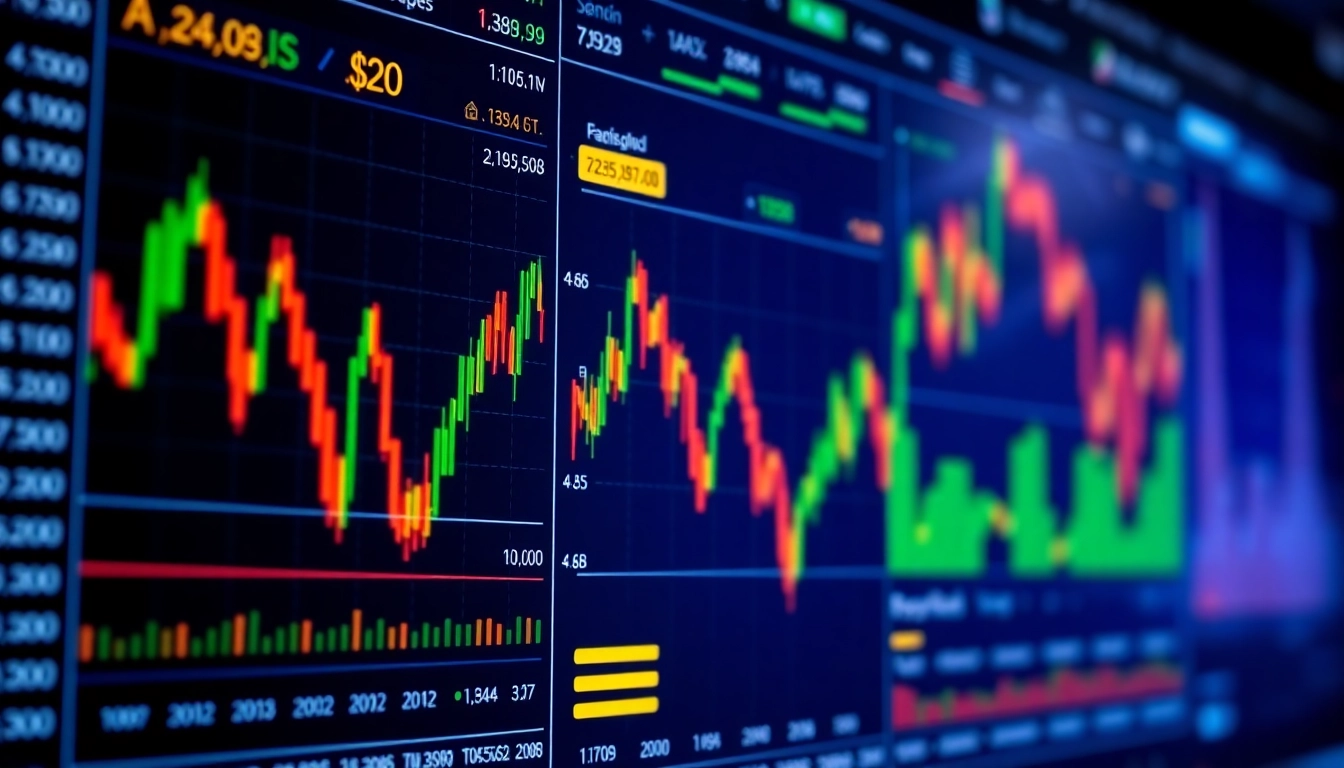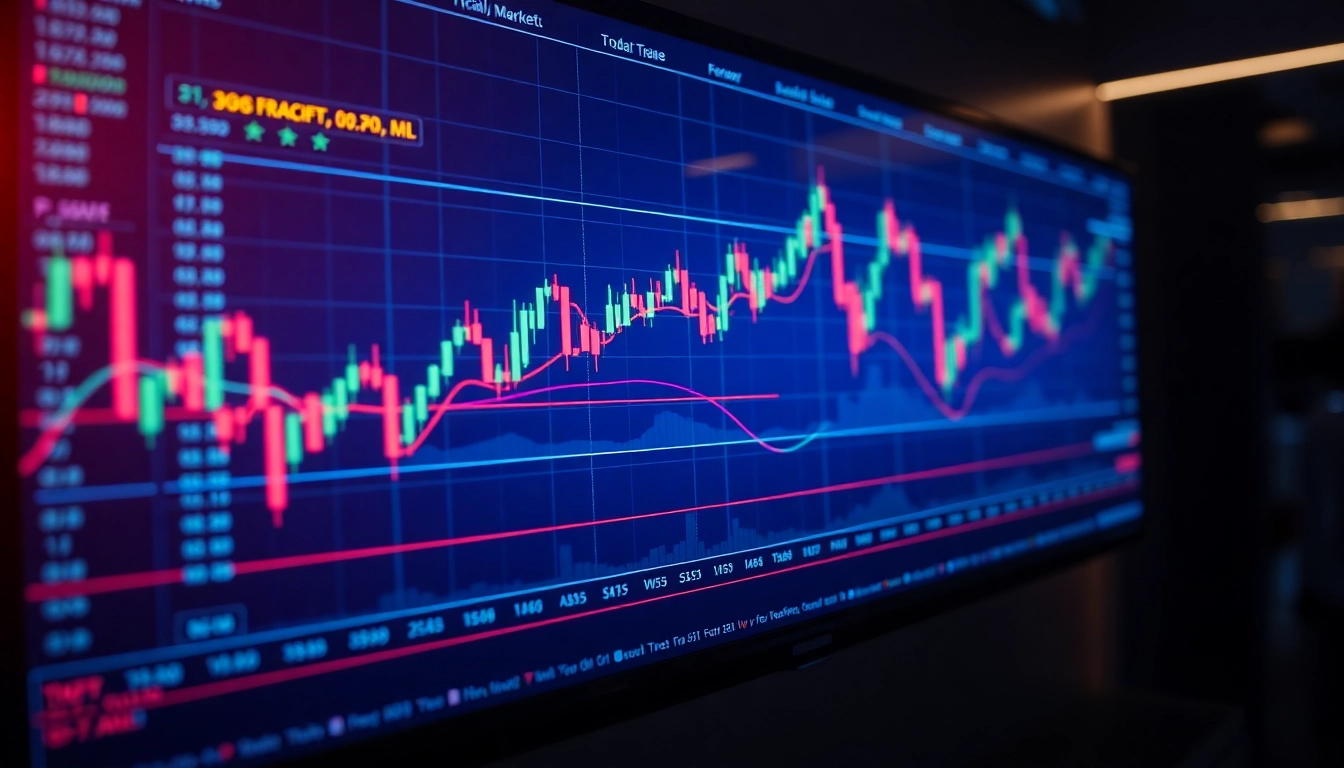Maximizing Your Trading and Investment Success with a UK Trading and Investment Platform
In today’s fast-paced financial environment, choosing a reliable and feature-rich UK Trading and Investment Platform can be transformative for both novice and experienced traders. The global markets are experiencing unprecedented volatility, driven by geopolitical shifts, technological innovations, and macroeconomic factors. To capitalize on these opportunities, investors need platforms that not only provide robust tools but also adhere to regulatory standards for security and transparency. This article explores how the core features of such platforms, combined with insightful market analysis and innovative investment options, can help you stay ahead in the dynamic world of trading and investing.
1. Understanding the Core Features of a UK Trading and Investment Platform
1.1. Essential tools for beginners and advanced traders
Modern trading platforms cater to a wide spectrum of users. For beginners, intuitive interfaces, educational resources, and demo accounts are critical in building confidence. Advanced traders, meanwhile, benefit from sophisticated charting tools, algorithmic trading capabilities, and extensive market data. A leading UK platform offers features like customizable dashboards, real-time alerts, and multi-asset trading, ensuring users can tailor the experience to their skill level and investment goals. Emphasizing user-friendly design while providing access to powerful analytics equips traders to make informed decisions swiftly and effectively.
1.2. Security protocols and regulatory compliance in the UK
Security is paramount in online trading, especially given the rise in cyber threats. UK-regulated platforms adhere to strict compliance standards set by authorities like the Financial Conduct Authority (FCA). Robust security protocols include encryption, two-factor authentication, and segregated client accounts to prevent fraud and ensure privacy. Compliance not only protects investors but also enhances platform credibility, fostering trust within the trading community. For instance, recent measures include regular audits and transparent reporting of operational practices, which are vital for safeguarding user assets.
1.3. Comparing platform interfaces for usability and effectiveness
A seamless user experience can significantly impact trading performance. Platforms with clean, intuitive interfaces reduce the learning curve and facilitate quicker navigation through markets. Features to consider include mobile responsiveness, customizable layouts, and easy access to essential tools like order books and news feeds. Comparing different UK platforms based on user feedback, technical ratings, and feature sets can help identify the most effective interface. An effective platform balances sophistication with simplicity, empowering traders to execute strategies efficiently without unnecessary complexity.
2. Market Trends and Insights to Inform Your Trading Decisions
2.1. Analyzing recent stock market movements and gold records
Recent market activity shows a blend of resilience and volatility. European shares closed marginally higher, supported by defense stocks amid geopolitical tensions, while gold hit a new record, soaring past $3,501 per ounce as investors seek safety amidst economic uncertainty. Understanding these movements requires analyzing underlying drivers such as inflation data, central bank policies, and geopolitical developments. For example, gold’s rally reflects fears of inflation and currency devaluation, prompting traders to diversify portfolios with safe-haven assets. Continuous monitoring of such trends enables traders to make strategic entry and exit decisions aligned with macroeconomic realities.
2.2. Impact of global events on UK and European markets
Global political and economic events significantly influence regional markets. Recent developments like the US-China trade tensions, US Federal Reserve rate cut hopes, and Eastern European geopolitical uncertainties have added layers of complexity. For instance, the Trump-Fed feud and calls for US rate adjustments impact currency valuations, stock indices, and commodities prices. UK traders should pay close attention to these external factors, leveraging news feeds and analytical tools within their platforms to anticipate market shifts. Such insights enhance the ability to adapt quickly and mitigate risks associated with unforeseen events.
2.3. Utilizing economic reports and labor data for smarter investments
Economic indicators such as employment reports, inflation figures, and GDP growth rates serve as vital signals for market direction. Recent US labor data, for example, influenced currency movements and interest rate expectations. Skilled traders interpret these reports to refine their strategies—identifying opportunities in asset classes like equities, forex, or commodities. Using platform-integrated economic calendars and data analytics, investors can align their trades with upcoming releases, gaining an edge over less-informed counterparts. Regularly updating this knowledge ensures alignment with current market conditions, boosting investment confidence.
3. Incorporating Advanced Investment Options on Your Platform
3.1. Crypto assets: Bitcoin, Ether, and alternative cryptocurrencies
The surge in cryptocurrency popularity presents traders with new opportunities for diversification. Platforms now facilitate access to Bitcoin, Ether, and a host of altcoins, allowing active trading, holding, and staking. MicroStrategy’s recent bitcoin acquisitions exemplify institutional confidence, while developments in blockchain technology bolster this asset class’s legitimacy. However, cryptocurrencies are highly volatile, demanding disciplined risk management strategies. Effective platforms provide real-time price data, secure wallets, and advanced order types, empowering traders to navigate this rapidly evolving landscape.
3.2. Diversifying with commodities like gold and iron ore
Commodities offer a hedge against inflation and a means to diversify portfolios. Gold remains a prized safe-haven asset, especially as the metal hits new record highs amid economic uncertainties. Iron ore futures reflect China’s manufacturing health, serving as a barometer for global industrial activity. Platforms with commodity trading capabilities give investors access to live market data, futures contracts, and options, enabling nuanced exposure to diverse sectors. Strategic allocation in commodities can enhance resilience and generate gains during market downturns.
3.3. Exploring forex and emerging stocks for growth opportunities
The forex market remains the largest financial market, with currency pairs influenced by macroeconomic policies and geopolitical developments. Recent U.S. rate cut hopes have bolstered certain currencies, creating opportunities for forex traders. Additionally, emerging markets and stocks, especially in sectors like technology and green energy, are gaining prominence. Using advanced filtering and analysis tools, traders can identify high-growth opportunities, implement leverage prudently, and manage risks effectively in these volatile yet potentially rewarding segments.
4. Tips for Successful Trading and Risk Management
4.1. Setting realistic goals and stop-loss strategies
Achievement in trading relies on clearly defined objectives and disciplined risk controls. Setting realistic profit targets and implementing stop-loss orders helps contain losses and protect gains. For example, traders might aim for a 2-3% gain per trade with a 1-2% stop-loss, balancing risk-reward ratios. Regularly reviewing and adjusting these parameters based on market conditions ensures the strategy remains viable. Knowledge of volatility levels and adherence to a trading plan fosters consistency and sustainable growth over time.
4.2. Monitoring market signals and trending topics effectively
Adept traders keep abreast of real-time market signals, news, and social media trends. Platforms offering integrated news feeds, technical alerts, and sentiment analysis tools facilitate swift responses to market shifts. For example, breaking news about regulatory developments or geopolitical events can trigger quick trading decisions. Using alerts and customizable dashboards, traders stay informed without information overload, enabling timely action aligned with their risk profile.
4.3. Staying updated with platform news, partnerships, and updates
Technology and feature enhancements are constant in the trading world. Staying updated on platform updates, new partnerships, and regulatory changes is vital. For instance, recent Meta collaborations to enhance app functionalities suggest broader integrations and smarter user experiences. Regularly reviewing platform news ensures traders leverage new tools, improvements, and compliance features, maintaining a competitive edge.
5. Leveraging Data and Innovation to Enhance Your Trading Strategies
5.1. Utilizing artificial intelligence and analytics tools
Artificial intelligence (AI) is revolutionizing trading strategies by providing predictive analytics, sentiment analysis, and automated execution. AI models can analyze vast datasets faster than humans, identifying patterns and anomalies. For example, platforms integrating AI can recommend personalized trade opportunities or alert traders to emerging trends. Embracing such technology allows investors to refine their decision-making process, reduce emotional biases, and execute trades with higher precision.
5.2. Embracing digital trends like NFTs and blockchain integration
The rise of NFTs and blockchain technology offers new avenues for diversification. Platforms supporting NFT trading and blockchain assets enable investors to participate in digital ownership and decentralized finance (DeFi). These trends are reshaping the investment landscape, emphasizing transparency and global access. Awareness and early adoption of these innovations can provide competitive advantages and open new revenue streams.
5.3. Building a resilient investment portfolio with strategic insights
Successful investors focus on diversification, balancing different asset classes, and adjusting allocations to evolving market conditions. Using advanced analytics, macroeconomic data, and real-time news, traders can optimize their portfolios for risk-adjusted returns. Periodic review and rebalancing, based on strategic insights and performance metrics, ensure resilience against shocks and capitalize on emerging opportunities.




